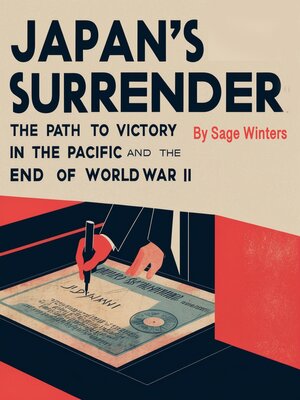Japan's Surrender
audiobook (Unabridged) ∣ The Path to Victory in the Pacific and the End of World War II
By Sage Winters

Sign up to save your library
With an OverDrive account, you can save your favorite libraries for at-a-glance information about availability. Find out more about OverDrive accounts.
Find this title in Libby, the library reading app by OverDrive.



Search for a digital library with this title
Title found at these libraries:
| Library Name | Distance |
|---|---|
| Loading... |
The Pacific theater of World War II was a brutal and protracted conflict, defined by fierce battles, shifting strategies, and immense human cost. By 1945, the war had entered its final stages, with the Allied forces, led primarily by the United States, gradually gaining the upper hand over Imperial Japan. The end of the Pacific War seemed inevitable, yet the path to Japan's surrender was far from straightforward. The road to victory in the Pacific involved a combination of military ingenuity, strategic alliances, and significant geopolitical shifts. However, the culmination of this path was not solely the result of battlefield victories but also of profound shifts in the political, economic, and moral considerations of both the Japanese leadership and the Allied powers.
The turning point in the Pacific War came with key battles such as the Battle of Midway in 1942, which severely crippled Japan's naval forces, and the Allied island-hopping strategy, which successfully isolated and neutralized key Japanese strongholds in the Pacific. Despite these significant losses, Japan's leadership remained determined to continue the war, believing that they could negotiate a favorable peace settlement or, at worst, fight to a bloody conclusion. In 1945, as Japan's ability to defend its empire steadily diminished, the Allied forces intensified their efforts, culminating in the invasion of Okinawa—an operation that proved to be one of the bloodiest of the war.
As the war raged on, the Japanese home islands were subjected to relentless bombing campaigns, both conventional and, later, nuclear. The United States, having developed the atomic bomb, found itself at a crossroads. The decision to deploy this new weapon was fueled by the desire to force Japan's surrender without having to launch a full-scale invasion, which would likely result in catastrophic casualties for both sides.







